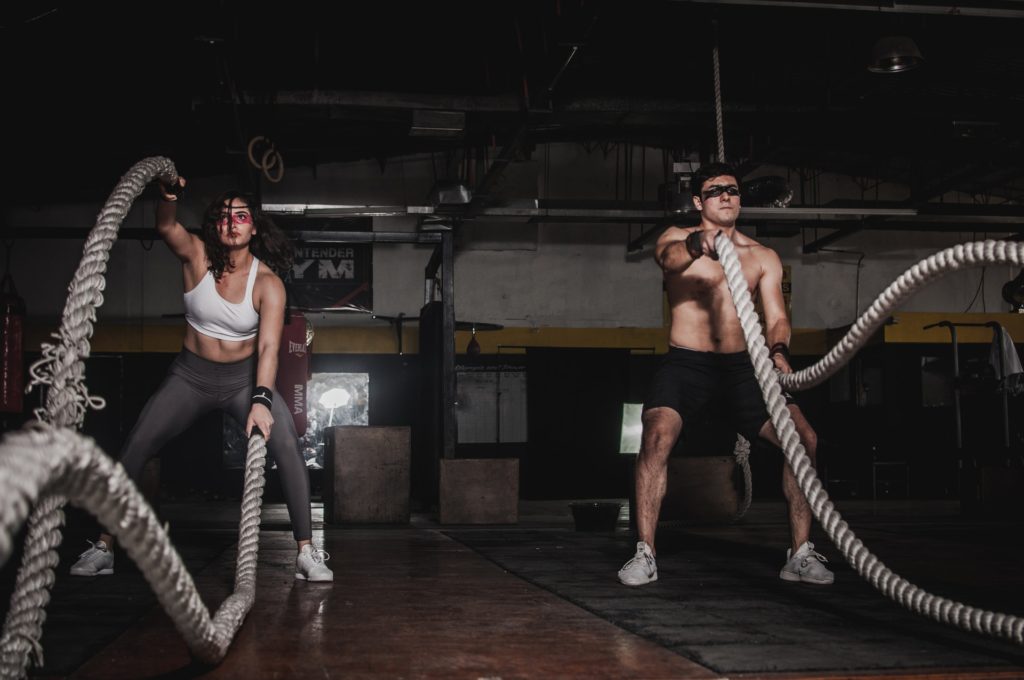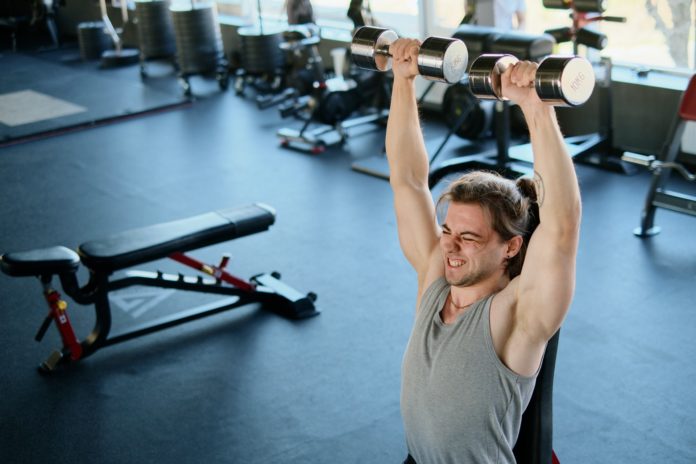Warm up prior to intense activity. Stretch well before and after your workout. Keep moving and stretch as often as you can! Gentle walking and stretching after a workout will help keep those waste products from settling into your muscles and help prevent delayed-onset muscle soreness (DOMS).
While mild soreness after a workout is generally not a bad thing, there’s a great difference between soreness and actual pain. Mild soreness is just a sign that the muscle has been taxed, however pain means that you have over-trained and/or have done your exercises incorrectly.

Normally stress on the muscle causes microscopic breakdown of muscle fibers, which in turn causes discomfort. The muscle breakdown serves a purpose: when those fibers rebuild, the muscle is stronger. However intense pain is a sign of muscle, tendon, ligament and joint damage. As small as the damage might be, constant pressure through workouts will eventually develop into serious injury, so learn how to workout properly so you can protect your body from future injury.
Doing too much too soon, or training too aggressively is a sure sign of possible future injury. Increasing weights too soon, increasing your running distance too soon, adding in hills to your aerobic workout too quickly, pounding your feet too hard on the surface when running or jumping into a workout you’re not ready for can cause stress fractures, tendinitis, runner’s knee, plantar fasciitis, and hamstring injuries.
The risk of soreness shouldn’t deter anyone from beginning a workout program, for it’s important and healthy to keep an active lifestyle.
All the research backs up the benefits of activity. Whether it be running, walking, playing pickup basketball or golfing. All of those activities are going to be good for your cardiac health, your joint health and your overall health.

Unfortunately most people that start a new workout program jump into their workout with too much aggressiveness and for too long of a time.
In most cases such actions disregard proper form, proper breathing, incorrect techniques and thus pain afterwards instead of mild soreness.
To avoid pain the next day after workouts practice the following:
* Warm up prior to intense activity.
* Stretch well before and after your workout.
* Increase weight, repetitions and length of time gradually. * Don’t make sudden changes to the surfaces you train on.
* Be careful with the volume or intensity of your workouts.
* Keep moving! Gentle walking and stretching after a workout will help keep those waste products from settling into your muscles and help prevent DOMS.
* Be gradual! If you slowly increase the load on your muscles, soreness will be less of an issue.
© Copyright – Hector Sectzer

















